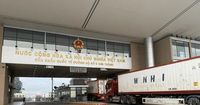The United States is preparing to raise tariffs on imports from various countries, a policy reminiscent of former President Donald Trump. On March 20, 2025, Trump supported raising tariffs to address complaints from various countries. Following this, on March 21, it was announced that imports from Mexico and Canada would face a 25% tariff, while tariffs on Chinese goods would increase by an additional 10%, effective April 4, 2025.
In a series of announcements, the U.S. government detailed various tariff adjustments, including a 25% tariff on steel and aluminum starting May 12, 2025, and reciprocal tariffs on imports from numerous countries. The automotive industry is particularly affected, with tariffs on imported cars, semiconductors, and medicines set to rise by 25% beginning May 2, 2025. Additionally, tariffs on goods from Spain and Europe will increase by 25%, effective the same day.
Trump has stated that adjusting tariffs on imported goods will raise prices, thereby protecting U.S. manufacturers from foreign competition and boosting domestic employment. Tariffs are essentially taxes imposed by the government on imported goods, which can make these items more expensive for consumers. This, in turn, may lead buyers to opt for cheaper alternatives, potentially impacting sales of the affected products.
Analysts predict that Thailand could be among the countries facing higher tariffs due to its significant trade surplus with the United States. The value of Thai exports to the U.S. exceeds imports, which raises concerns about the potential economic impact. According to the Kasikorn Research Center, if Thailand is subjected to a full 25% tariff, it could adversely affect the Thai economy (GDP) by approximately 0.6%, leading to a growth rate below the anticipated 2.4% for 2025.
In terms of specific exports, Thailand's electronics and automotive parts are particularly vulnerable. Currently, the largest Thai exports to the U.S. include electronics and components (32%), electrical appliances (24.7%), rubber products (4.3%), and automotive parts (4.3%). The impact of increased tariffs could see these figures decline sharply.
Research from Krungsri suggests that the Thai economy will continue to face uncertainty and risks from U.S. trade policies, which could hinder growth in the export sector—one of Thailand's key economic drivers. Recent announcements indicate that the U.S. plans to impose additional tariffs on imports from countries with which it has a trade surplus, placing Thailand at risk due to its favorable trade balance with the U.S.
The SCB EIC has analyzed that if the U.S. imposes tariffs on Thai goods, the country could see a decrease in exports by up to 8 billion dollars. This could particularly affect sectors like rice, processed shrimp, tires, and auto parts. The Ministry of Commerce has indicated that the U.S. is Thailand's number one export market, making this tariff increase a significant concern.
To mitigate the impact, Thai officials are advocating for proactive negotiations with the U.S. to reduce tariffs and increase import quotas for specific goods, such as corn, soybeans, and livestock. The government is also encouraging Thai businesses to expand investments in the U.S. to create jobs and strengthen trade relations.
Additionally, the Thai government is preparing to address the potential influx of Chinese goods into the Thai market as a result of U.S. tariffs. The SCB EIC has highlighted that if China cannot export to the U.S., it may increase its exports to Thailand, potentially flooding the market and undermining local producers.
The Thai Chamber of Commerce and the Federation of Thai Industries have expressed concerns regarding the reciprocal tariff policy and its implications for the Thai economy. They warn that the tariffs could lead to significant job losses and a decrease in competitiveness for Thai products in both domestic and international markets.
As part of the strategy to handle the impending tariffs, the Thai government plans to engage in comprehensive discussions that encompass trade, investment, and other cooperative measures with the U.S. This approach aims to address the trade deficit while ensuring that Thai businesses remain competitive.
In summary, the looming tariff increases by the United States under the Trump administration pose substantial risks to the Thai economy. With potential losses estimated at 8 billion dollars, the government is urged to act swiftly and decisively to protect its export sectors and maintain robust trade relations with the U.S. The coming months will be critical as Thailand navigates this challenging landscape in international trade.








